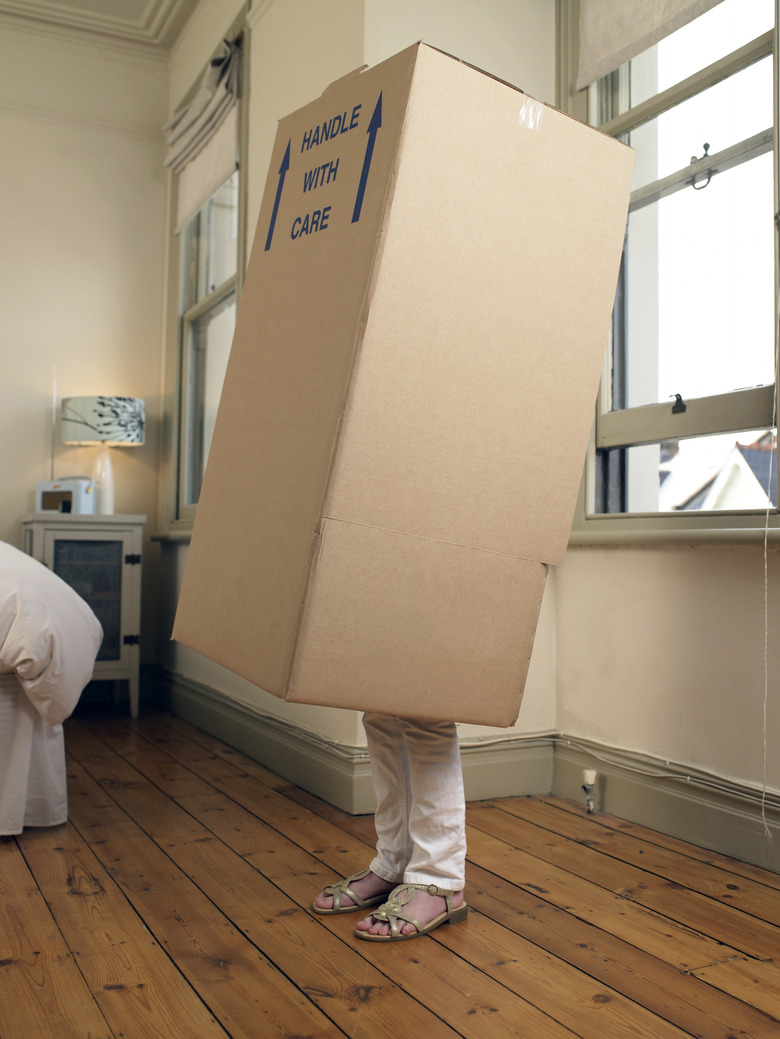How To Calculate The Volume Of A Box
Say you're planning to offload a large supply of toy building blocks left over from your younger years to your nephew across the country – more than enough to require a good-sized, moving-style cardboard box.
Your problem: You're not sure which of the two cardboard boxes you have on hand, short-and-wide A or tall-and-narrow B, is best for the job. You do know that only one of them is big enough to hold all of the blocks; your mother is a math teacher and confirmed this, but won't tell you more.
The blocks now rest in a rectangular wooden toy box 1 foot deep, 1.5 feet wide and 2 feet across. Your cardboard boxes are shaped differently from the wooden box and from each other. You are given their dimensions – in other words, their length, width and depth – and need only determine which of the two is the one you need. But how exactly do you calculate the volume of a box?
What Is Volume?
What Is Volume?
Volume is a quantity derived from length, which is a fundamental unit in physics and has a standard unit of the meter, which is about 3.28 feet. Area is length times width, and since these obviously have the same units, area is normally expressed in square meters (m2). Volume is area envisioned a horizontal plane plus a vertical dimension (depth or height). Thus the standard unit for volume is the cubic meter (m3).
Volume, then, is nothing more than three-dimensional space, real or defined by the mathematics of a given physics problem. It therefore does not have to be in the shape of a rectangular box, or a regular shape at all. Clearly, though, calculating the volumes of "regular" shapes such as spheres, cubes and pyramids is easier thanks to the relative ease of the required math.
Volume of a Rectangular Solid
Volume of a Rectangular Solid
The volume of any rectangular box is given by its length times its width times its height, in any order. This may be written LWH. A cube is just a special example of a rectangle with invariant sides, so LWH can be written simply LLL or _L3_.
Comparing Your Boxes
Comparing Your Boxes
You now know that the volume the blocks take up is given by the dimensions of their wooden container: 1.5 × 3 × 2 feet, or 9 cubic feet (ft3).
A glance at the small label on each cardboard box shows that shorter, wider box A is 4 × 2 × 1 feet in size, while the dimensions of taller, narrower box B are 1.25 × 2 × 4 feet.
The volume of box A and the volume of box B are therefore 8 ft3 and 10 ft3 respectively, so box B is the one you'll need to use. The small area of box B's base is more than made up for by its height, giving enough overall volume in which to place the blocks.
Volume Calculators for Assorted Shapes
Volume Calculators for Assorted Shapes
You may want to know a few of the formulas for other common three-dimensional shapes. For example, you may already know that the area of a circle is π times its radius squared, or _πr2. It may seem fitting, then, that the area of a cylinder is this quantity times the cylinder's height: πr2h. The formula for the volume of a sphere is similar: 4/3πr3_.
Note that you can tell from the exponent of the length term of the problem whether you are dealing with area (when it is _r2_) or with a volume measurement (in which case it is _r3_).
Cite This Article
MLA
Beck, Kevin. "How To Calculate The Volume Of A Box" sciencing.com, https://www.sciencing.com/calculate-volume-box-2256716/. 21 October 2019.
APA
Beck, Kevin. (2019, October 21). How To Calculate The Volume Of A Box. sciencing.com. Retrieved from https://www.sciencing.com/calculate-volume-box-2256716/
Chicago
Beck, Kevin. How To Calculate The Volume Of A Box last modified August 30, 2022. https://www.sciencing.com/calculate-volume-box-2256716/
